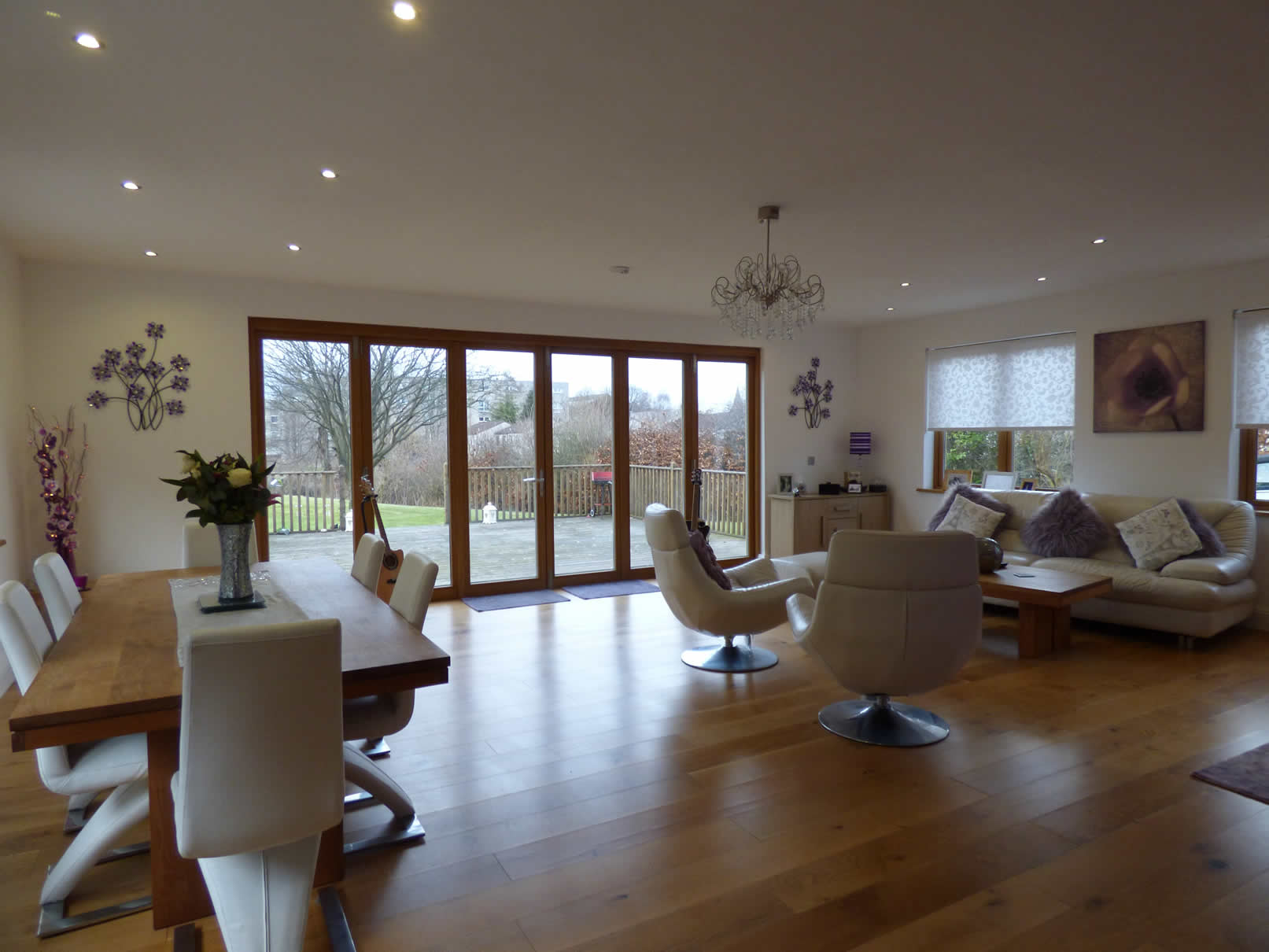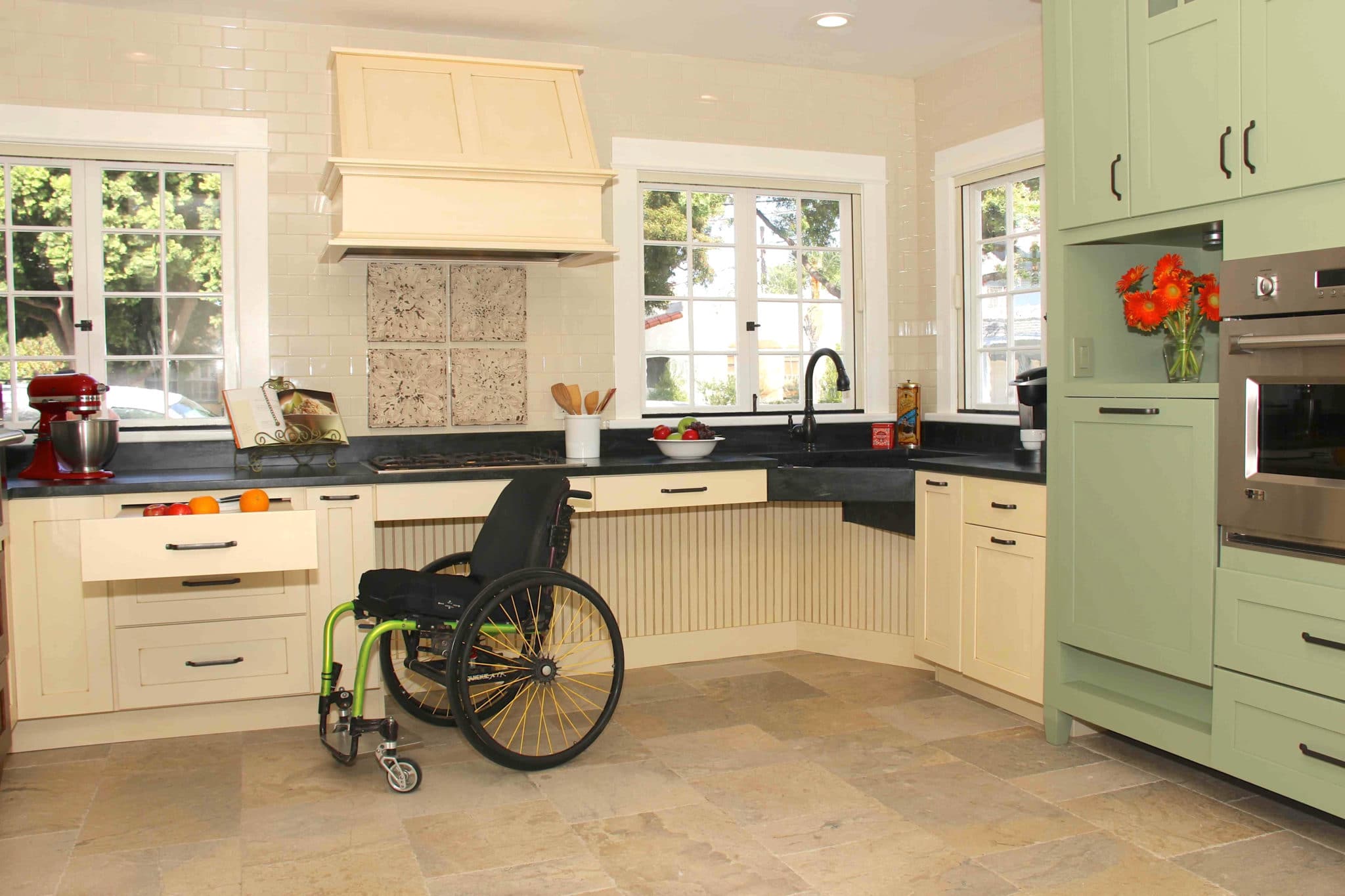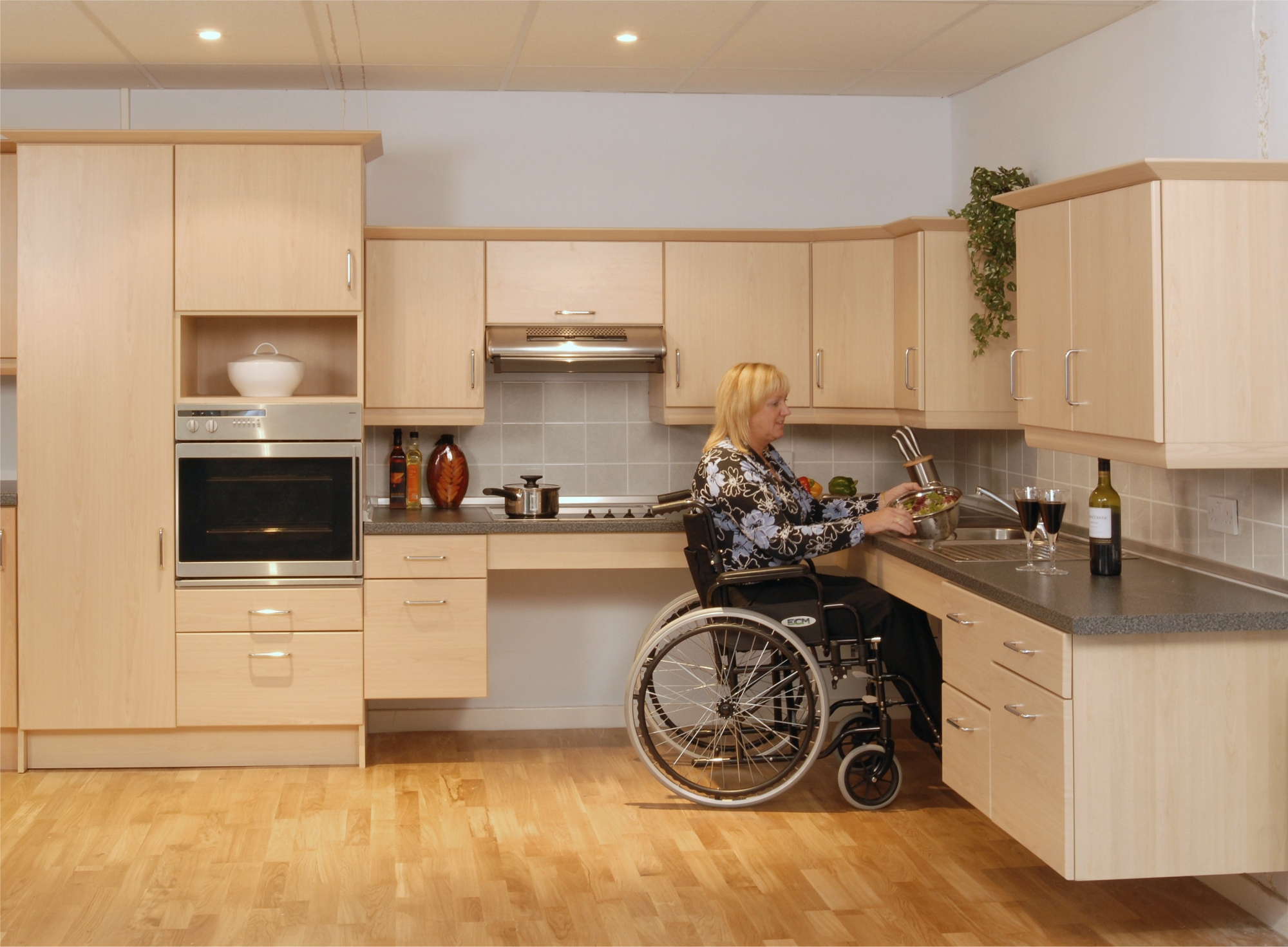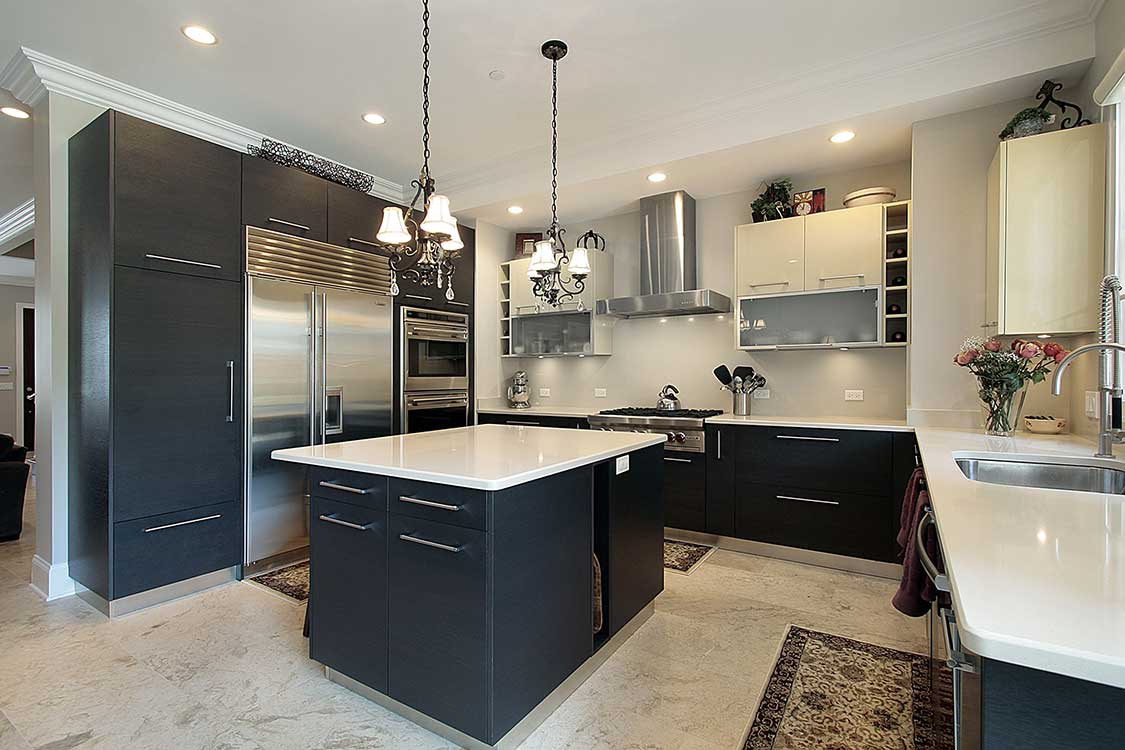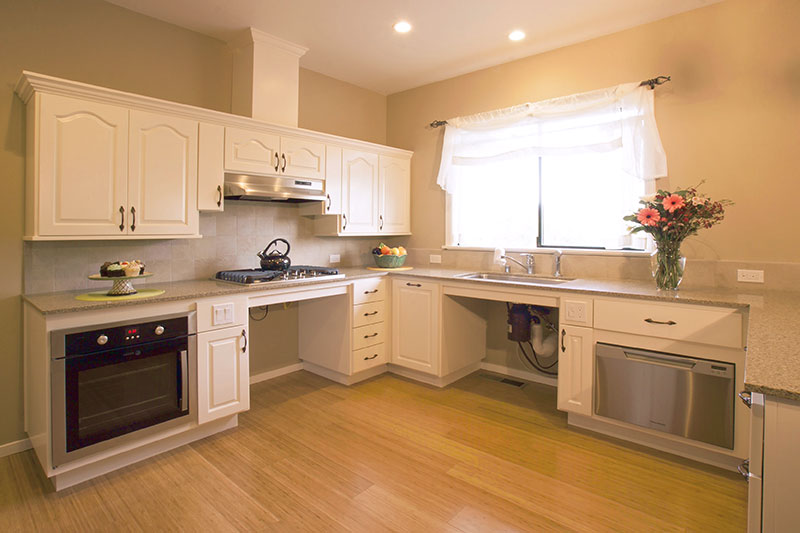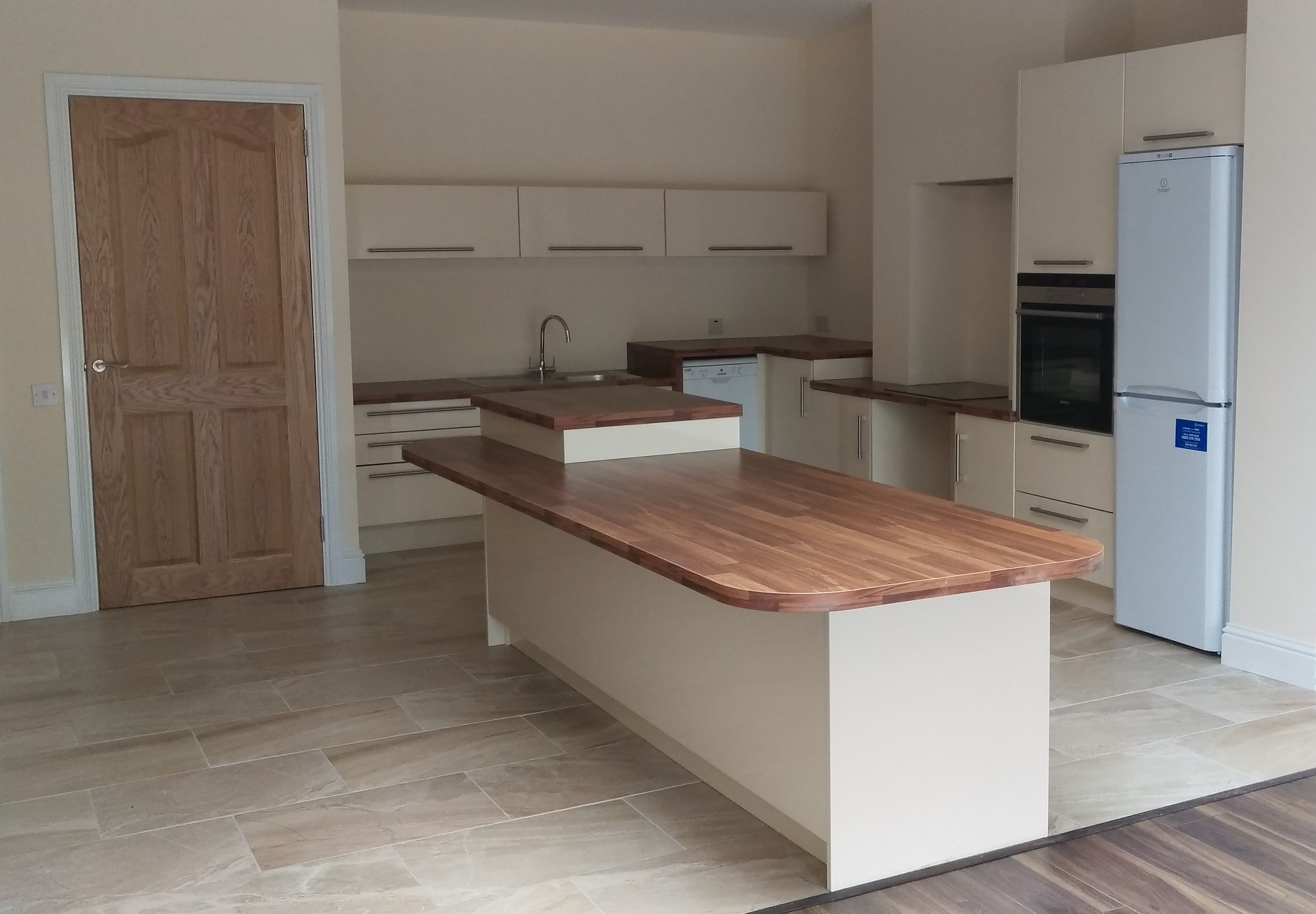As we age, certain tasks can become more challenging. However, with proper planning and design, it is possible to create a kitchen that is functional and safe for people of all ages and abilities. This is where universal design for aging in place comes in. It focuses on creating an environment that is accessible and easy to use for everyone, regardless of their age or physical abilities.Universal Design for Aging in Place
When designing a kitchen for aging in place, it is important to consider the needs and limitations of the individuals who will be using it. This can include features such as lower countertops, pull-out shelves, and easy-to-reach storage. Other ideas may include adding task lighting, non-slip flooring, and easy-to-use handles and knobs. These small changes can make a big difference in creating a functional and safe kitchen for aging in place.Aging in Place Kitchen Design Ideas
Accessibility is key when it comes to aging in place kitchen design. This means creating a space that is easy to navigate and use for individuals with disabilities or mobility limitations. Some features to consider may include wider doorways, lower countertops and cabinets, and open floor plans for easy maneuverability. These design elements can make a kitchen more accessible for individuals who use mobility aids such as wheelchairs or walkers.Accessible Kitchen Design for Aging in Place
As we age, our physical abilities may change, making certain tasks more difficult. This is why it is important to create a kitchen that is senior-friendly. This can include features such as pull-down shelves, touchless faucets, and easy-to-use appliances with large, visible controls. These design elements can make a kitchen more user-friendly for seniors, allowing them to continue cooking and preparing meals independently.Senior-Friendly Kitchen Design
Aging in place kitchen design should also take into consideration the potential changes in physical abilities that may occur as we age. An adaptable kitchen design can accommodate these changes, ensuring that the space remains functional and safe for individuals of all ages. This can include adjustable countertops and cabinets, as well as easy-to-reach storage options that can be modified as needed.Adaptable Kitchen Design for Aging in Place
Inclusive kitchen design is about creating a space that is welcoming and accessible for people of all ages and abilities. This can include features such as wide aisles, accessible appliances, and multiple counter heights to accommodate individuals of different heights and abilities. By incorporating inclusive design elements, the kitchen becomes a space that can be enjoyed by everyone.Inclusive Kitchen Design for Aging in Place
Ergonomic design is all about creating a space that is comfortable and efficient to use. This is especially important for aging in place kitchen design, as it can help reduce strain and fatigue while performing daily tasks. Some ideas for an ergonomic kitchen may include adjustable countertops and sinks, as well as pull-out shelves and drawers for easy reach.Ergonomic Kitchen Design for Aging in Place
A barrier-free kitchen design is a space that is free of any obstacles or barriers, making it easy to navigate for individuals with mobility limitations. This can include features such as wider doorways, no-step entries, and open floor plans. By removing barriers, the kitchen becomes a more accessible and safe space for individuals to move around and complete tasks.Barrier-Free Kitchen Design for Aging in Place
A functional kitchen design is all about creating a space that is efficient and easy to use. This can include features such as ample storage, proper lighting, and well-designed work zones. By incorporating these elements, the kitchen becomes a space that promotes independence and allows individuals to complete tasks with ease.Functional Kitchen Design for Aging in Place
Lastly, an independent living kitchen design focuses on creating a space that allows individuals to maintain their independence as they age. This can include features such as easy-to-use appliances, no-step entries, and ample storage for kitchen essentials. By incorporating these design elements, the kitchen becomes a space where individuals can continue to live and thrive independently.Independent Living Kitchen Design for Aging in Place
Creating an Age-Friendly Kitchen Design for Aging in Place

Designing for Accessibility
 As we age, simple daily tasks can become more difficult. That's why it's important to consider accessibility when designing a kitchen for aging in place.
Accessible design
means creating a space that is functional and easily navigable for individuals with mobility challenges or disabilities. This can include features such as
lower countertops and cabinets
to accommodate those who may be using a wheelchair or walker,
wide walkways
to allow for easy maneuvering, and
pull-out shelves
for easier access to items.
As we age, simple daily tasks can become more difficult. That's why it's important to consider accessibility when designing a kitchen for aging in place.
Accessible design
means creating a space that is functional and easily navigable for individuals with mobility challenges or disabilities. This can include features such as
lower countertops and cabinets
to accommodate those who may be using a wheelchair or walker,
wide walkways
to allow for easy maneuvering, and
pull-out shelves
for easier access to items.
Maximizing Safety and Comfort
 In addition to accessibility, safety and comfort are also key considerations for aging in place kitchen design.
Slip-resistant flooring
can help prevent falls, while
adequate lighting
can reduce strain on aging eyes.
Adjustable countertops and shelving
can also make tasks easier and more comfortable for those with limited mobility or reach. Incorporating
non-slip mats
in areas prone to spills and
grab bars
near high-risk areas such as the stove or sink can also provide added safety for aging individuals.
In addition to accessibility, safety and comfort are also key considerations for aging in place kitchen design.
Slip-resistant flooring
can help prevent falls, while
adequate lighting
can reduce strain on aging eyes.
Adjustable countertops and shelving
can also make tasks easier and more comfortable for those with limited mobility or reach. Incorporating
non-slip mats
in areas prone to spills and
grab bars
near high-risk areas such as the stove or sink can also provide added safety for aging individuals.
Creating a Functional Layout
 When designing a kitchen for aging in place, it's important to consider the
work triangle
– the distance between the stove, sink, and refrigerator. This layout should be
compact and efficient
, allowing for easy movement between these key areas.
Lowering the placement of appliances and cabinets
can also make them more accessible for those with limited mobility. Additionally, incorporating
touchless faucets
and
smart appliances
can make tasks easier and more convenient for aging individuals.
When designing a kitchen for aging in place, it's important to consider the
work triangle
– the distance between the stove, sink, and refrigerator. This layout should be
compact and efficient
, allowing for easy movement between these key areas.
Lowering the placement of appliances and cabinets
can also make them more accessible for those with limited mobility. Additionally, incorporating
touchless faucets
and
smart appliances
can make tasks easier and more convenient for aging individuals.
Incorporating Universal Design Principles
 Universal design principles focus on creating spaces that are
functional and comfortable for people of all ages and abilities
. When designing a kitchen for aging in place, it's important to incorporate these principles to ensure the space can adapt as an individual's needs change. This can include features such as
lever-style door handles
for easier grip,
wider doors and hallways
to accommodate mobility aids, and
adjustable countertops and cabinets
to accommodate changing needs.
Universal design principles focus on creating spaces that are
functional and comfortable for people of all ages and abilities
. When designing a kitchen for aging in place, it's important to incorporate these principles to ensure the space can adapt as an individual's needs change. This can include features such as
lever-style door handles
for easier grip,
wider doors and hallways
to accommodate mobility aids, and
adjustable countertops and cabinets
to accommodate changing needs.
Summary
 In conclusion,
aging in place kitchen design
is an important consideration for individuals looking to remain in their homes as they age. By focusing on accessibility, safety, comfort, and universal design principles, a kitchen can be transformed into a functional and comfortable space for aging individuals. With these elements in mind, individuals can continue to enjoy the independence and familiarity of their own homes for years to come.
In conclusion,
aging in place kitchen design
is an important consideration for individuals looking to remain in their homes as they age. By focusing on accessibility, safety, comfort, and universal design principles, a kitchen can be transformed into a functional and comfortable space for aging individuals. With these elements in mind, individuals can continue to enjoy the independence and familiarity of their own homes for years to come.



